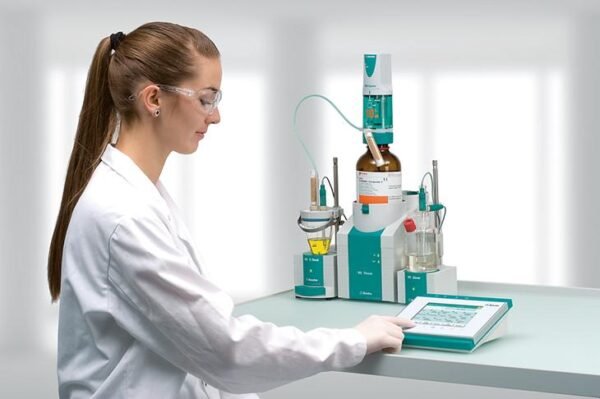
Embracing Automation in the Lab: Career Opportunities for Young Professionals

In the heart of our technological revolution, an unexpected protagonist is emerging – the modern laboratory. Imagine, if you will, a space pulsating with life. Yet, it is not solely the bustling energy of lab technicians and scientists that fuels this dynamism. It’s the synchronicity of automated machines conducting tasks that were once human-dependent. This realm, where test tubes, pipettes, and Bunsen burners coexist with robots and computers, is not a far-off concept. This is the reality we live in today.
What may seem like a scene from a futuristic movie is actually the dawn of a new era in the scientific community. An era where automation is not merely a supplement but a vital player in the progress of science. With the click of a button, tests are conducted, and data is analysed, making processes exponentially more efficient. This transformation isn’t limited to high-tech labs in Silicon Valley. It is taking place in laboratories around the world, challenging the traditional picture we have of science at work.
For young professionals, this is an exciting time. This changing landscape of lab work opens up new opportunities and challenges to learn, grow, and innovate. In the face of this shift, one cannot afford to be a bystander. It’s a moment to embrace the change and become a part of this automation-driven evolution.
The Rise of Automation in the Lab
Think of a laboratory, and what comes to mind? Perhaps a scientist meticulously measures solutions, carefully titrating to discover an unknown concentration. But this picture is rapidly changing. The landscape of laboratory work is shifting, with automated systems like the ones used in Karl Fischer titration transforming daily tasks. These sophisticated systems not only increase efficiency but also significantly reduce human error, a game-changer in industries where accuracy is paramount.
The benefits of embracing automation in lab work are innumerable. From speed and precision to data handling and processing, automation transforms time-consuming, repetitive tasks into a smooth, streamlined process. Consider the Karl Fischer titration method, traditionally a complex process requiring meticulous attention. With automation, this process becomes a precisely executed sequence, freeing scientists to engage in more demanding, intellectually stimulating tasks.
The Fear of Automation: Dispelling Myths
The fear that automation will lead to job loss is pervasive. Yet, history shows us that technology and automation often generate more jobs than they displace. Rather than eradicating roles, automation redefines them. It’s crucial to recognise that automation, while performing routine tasks, cannot replace the uniquely human qualities we bring to the table—our creativity, critical thinking, and innovative spirit.
Automation should be seen as an aid, not a threat. As machines take over repetitive tasks, scientists and lab technicians can focus on the more complex aspects of their work, where human intellect and creativity come to the fore. Karl Fischer titration, for example, no longer requires constant monitoring. This allows scientists to interpret and analyse results, propose hypotheses, and focus on the bigger picture.
Career Opportunities Born from Lab Automation
The rise of automation in the lab doesn’t mean the end of lab careers—it means a new beginning. New technologies demand new roles, from the maintenance and programming of automated systems to data analysis and interpretation. Robotics specialists, automation engineers, and data scientists are now more crucial than ever in the laboratory setting. These are not jobs of the future; they are the jobs of today.
Case studies abound of individuals who have leveraged automation to enhance their careers. For instance, biochemists who familiarised themselves with automated Karl Fischer titration techniques found themselves spearheading innovative research projects, their skills in high demand. Automation, rather than being a career end, became a career accelerator.
How to Upskill for the Automated Lab
But how does one navigate this evolving landscape? The answer is simple: upskill. Equip yourself with the knowledge and skills necessary to work with these automated systems. For a start, familiarise yourself with automation in commonly used processes, such as Karl Fischer titration. Understanding how these automated systems work, from setup to troubleshooting, is invaluable.
Interdisciplinary skills are also becoming increasingly significant. Coding, data analysis, and even robotics are skills that complement traditional lab work well. In an automated lab, being a biochemist isn’t enough—you need to be a biochemist who understands data science, a microbiologist with a knack for programming.
Making the Leap: Embracing Lab Automation
To the young professionals reading this, it’s time to leap. Embrace lab automation and the manifold opportunities it offers. Adopt a learning mindset and start familiarising yourself with the technologies shaping your industry. This isn’t just about keeping your job—it’s about excelling in your career.
Automation is not a looming threat—it’s a powerful tool waiting to be harnessed. From automated Karl Fischer titration to data handling and analysis, understanding and working with these systems can set you apart in your career. Automation is the future of the lab, and by embracing it, you are embracing a world of opportunities.
Summing Up
In the dynamic, fast-paced world of laboratory science, we stand at the threshold of a new era, an era defined by the harmonious marriage of human intellect and machine efficiency. It’s a future where automation is not an impersonal, faceless entity but a powerful ally augmenting our capabilities. From enhancing precision to amplifying productivity, automation is proving to be more than just a technological advancement; it’s the very heart of a revolution.
Far from obliterating opportunities, automation is creating a myriad of new roles and possibilities. It invites the young and the restless, the innovators and the creators, to redefine the contours of their careers, armed with the tools of the future. It challenges us to see beyond the conventional and realise the immense potential that the intersection of science and technology holds.
Therefore, to the young professionals navigating this exciting terrain, remember embracing automation isn’t just about surviving in this new age; it’s about thriving. The transformation of the lab represents a call to action. It’s an invitation to learn, adapt, and grow in tandem with the evolution of your field. The future is here; the future is automated. Step up, seize the day, and be a part of this exciting new chapter in the story of science.















































